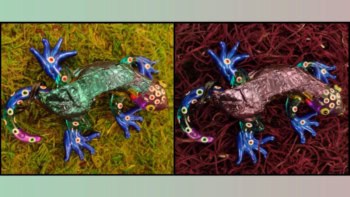Now that physicists can routinely make components such as mirrors and gratings for beams of atoms, attention in "atom optics" is turning to the integration and miniaturization of these components. Three groups have recently made significant progress in this direction. Two groups in the US are using combinations of solid substrates and metallic wires, while a group in the UK is using wires embedded in an optical fibre.
Mara Prentiss and colleagues at Harvard University in the US mounted two short wires on a sapphire substrate (Phys. Rev. Lett. 84 1124). When electric currents flow in opposite directions through the wires, a magnetic field is generated. An external magnetic field can then be used to cancel this field in the region between the wires. This zero-field region attracts cold, neutral atoms and channels them along the waveguide. The scheme also works when the external field is replaced by another pair of wires.
Eric Cornell’s group at the University of Colorado in Boulder has developed a similar scheme that uses longer wires (Phys. Rev. Lett. 83 5194). While the short-wire technique is ideal for constructing miniature beam splitters, longer wires can be curved. It should be possible to exploit this in the development of atomic interferometers.
“There are many advantages to using a substrate,” says Nynke Dekker of the Harvard team. “The substrate can be used as a heat sink for the wires, which allows large currents to be passed through them.” Another advantage is that standard techniques from the semiconductor industry could be used to fabricate atom circuits.
Meanwhile, a group led by Ed Hinds of Sussex University in the UK has made a waveguide for atoms by embedding four wires in a silica fibre with a hollow core (Phys. Rev. Lett. 84 1371). Current flowing through the wires creates a magnetic field that guides cold atoms back up the fibre. The coupling efficiency – the number of atoms guided into the fibre – is much higher than the substrate alternatives. “It’s a tricky experiment,” says Matt Key of Sussex, “but it is also a significant advance towards making an atom fibre, the cold-atom analogue of the optical fibre.”



